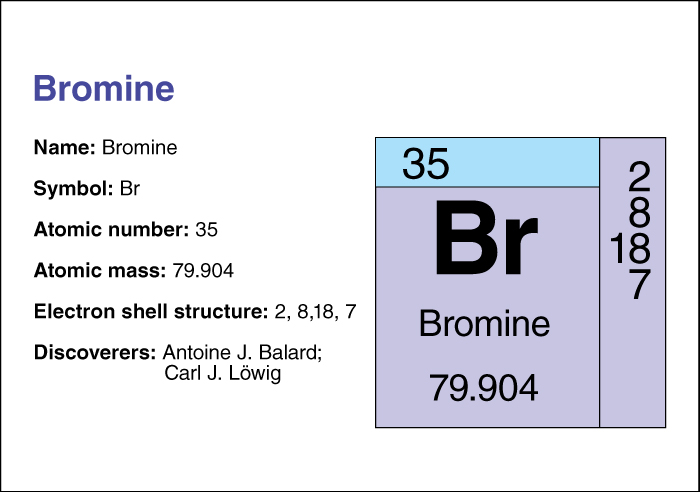Bromine, << BROH meen or BROH mihn, >> is a reddish liquid chemical element. Bromine is highly reactive, and it readily vaporizes into a reddish-brown gas that has a strongly irritating odor. Both the liquid and vapor forms of bromine are corrosive and poisonous. The liquid can cause severe skin burns.

Bromine is found in the form of bromide salts in salt water and dry salt beds. Commercial production of the chemical involves the treatment of salt water with chlorine to free the bromine. In the United States, the principal sources of the element are underground brines in Arkansas.
Bromine is used in making fire-retardant chemicals and as a disinfectant in water treatment. It is also used to make silver bromide, a light-sensitive component of photographic materials. Other bromine compounds are used as dyes and as sedatives and anesthetics.
Through the years, bromine was widely used to make ethylene dibromide (EDB), which is an additive in leaded gasoline. But the use of lead-free gasoline has nearly eliminated this application of bromine. EDB has also been used as an insecticide. However, most agricultural uses of EDB have been banned because studies have shown that the compound may cause cancer.
Bromine was first prepared in 1826 almost simultaneously by Antoine J. Balard, a French chemist, and Carl J. Lowig, a German chemist. Bromine has the chemical symbol Br. It belongs to the halogen family of chemical elements. Its atomic number (number of protons in its nucleus) is 35. Its relative atomic mass is 79.904. An element’s relative atomic mass equals its mass (amount of matter) divided by 1/12 of the mass of carbon 12, the most abundant form of carbon. Bromine freezes at –7.25 °C and boils at 59.47 °C. It is the only nonmetallic element that is liquid at room temperature. For information on the position of bromine on the periodic table, see the article Periodic table .
